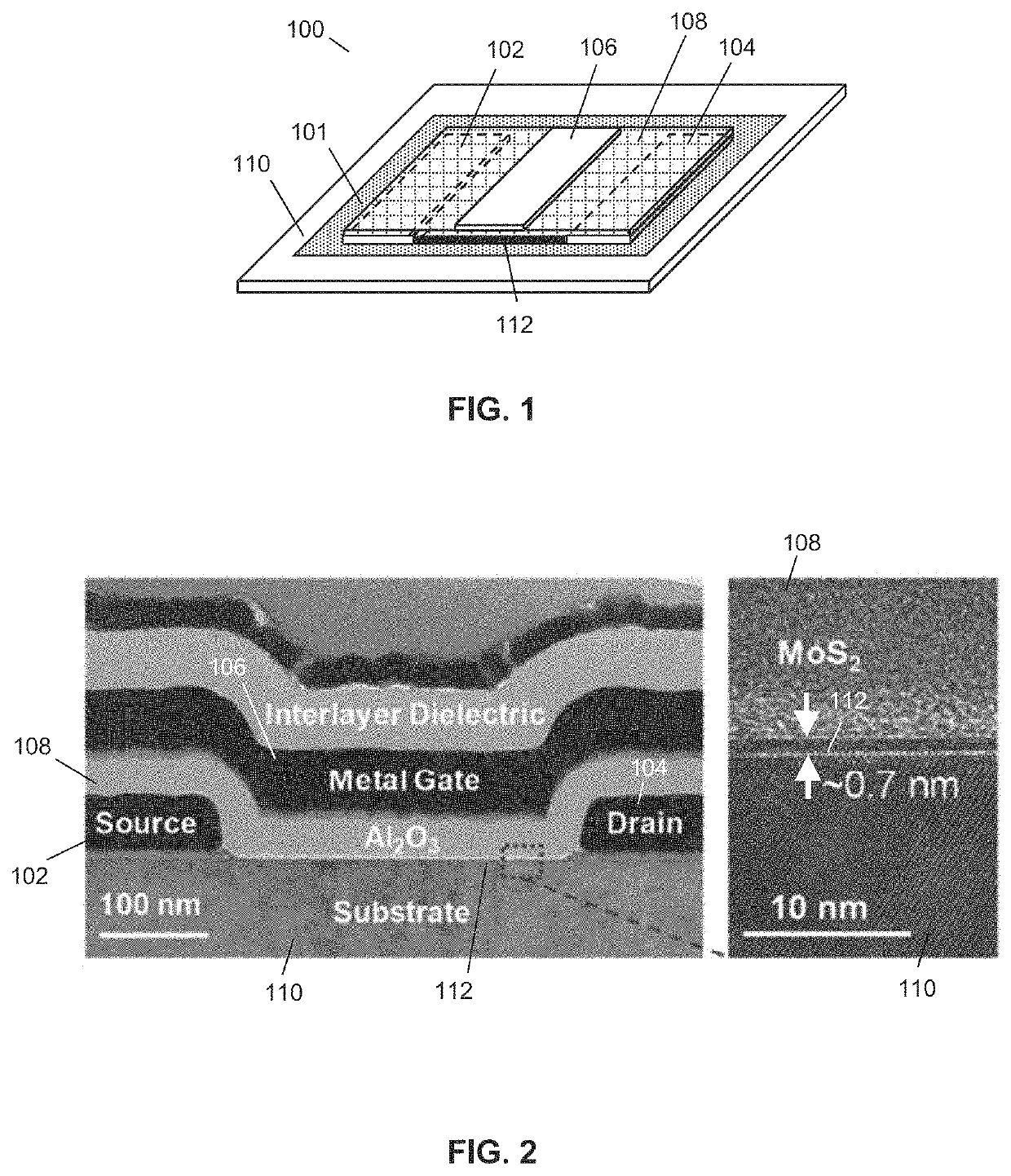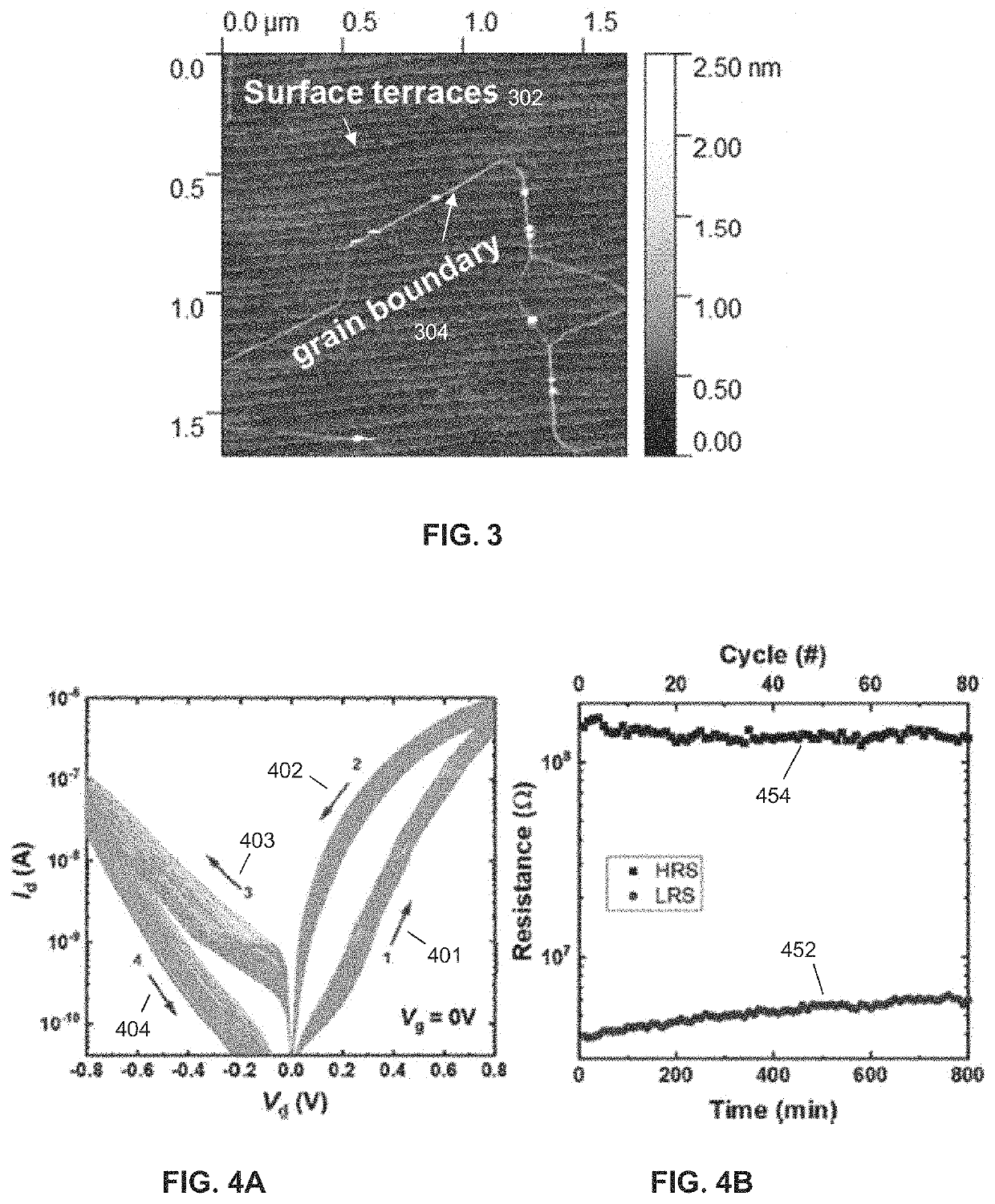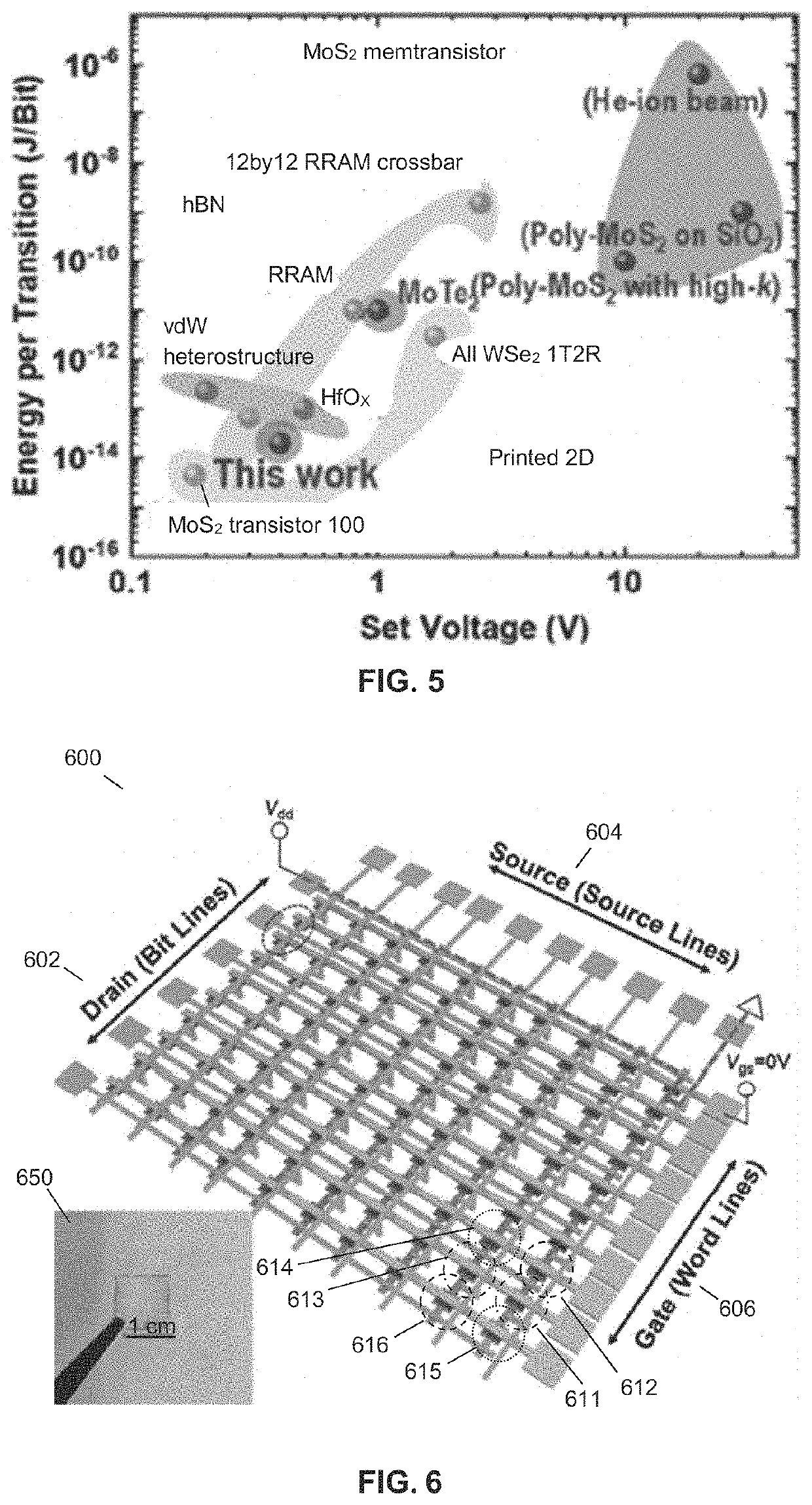Self-Selective Multi-Terminal Memtransistor for Crossbar Array Circuits
a cross-bar array circuit and multi-terminal technology, applied in the field of self-selective multi-terminal memtransistor, can solve the problems of limiting the size of the array, affecting the performance of the array, and affecting the data rate and energy consumption of the system, so as to achieve linear and symmetric synaptic weight updating, not consuming a lot of power, and suppressing the leakage current of the sneak path
- Summary
- Abstract
- Description
- Claims
- Application Information
AI Technical Summary
Benefits of technology
Problems solved by technology
Method used
Image
Examples
first embodiment
[0080]In the crossbar array circuit, the crossbar array circuit may comprise of a first 611 and a second 612 memtransistor whereby each memtransistor has the same structure as memtransistor 100. The drain electrodes of the first 611 and second 612 memtransistors may be electrically connected to a first bit line terminal, a gate electrode of the first 611 memtransistor may be electrically connected to a first gate terminal, a gate electrode of the second 612 memtransistor may be electrically connected to a second gate terminal, and the source electrodes of the first 611 and second 612 memtransistors may be electrically connected to a first source line terminal.
second embodiment
[0081]In the crossbar array circuit, in addition to the circuit comprising the first 611 and second 612 memtransistors, the circuit may further comprise a third 613 and a fourth 614 memtransistor whereby each memtransistor has the same structure as memtransistor 100. The drain electrodes of the third 613 and fourth 614 memtransistors may be electrically connected to the first bit line terminal, a gate electrode of the third 613 memtransistor may be electrically connected to the first gate terminal, a gate electrode of the fourth 614 memtransistor may be electrically connected to the second gate terminal, and source electrodes of the third 613 and fourth 614 memtransistors may be electrically connected together to a second source line terminal.
third embodiment
[0082]In the crossbar array circuit, the circuit may comprise a fifth 615 and a sixth 616 memtransistor whereby each memtransistor has the same structure as memtransistor 100. The drain electrodes of the fifth 615 and sixth 616 memtransistors may be electrically connected to a second bit line terminal, gate electrodes of the fifth 615 and sixth 616 memtransistors may be electrically connected to a third gate terminal, a source electrode of the fifth 615 memtransistor may be electrically connected to a third source line terminal, and a source electrode of the sixth 616 memtransistor may be electrically connected to a fourth source line terminal.
[0083]One skilled in the art will recognize that the first, second and third embodiments of the crossbar array circuit may be combined together as required without departing from the invention. FIG. 6 illustrates a three-dimensional schematic of a 10×10 MoS2 crossbar array 600 made up of memtransistors 100. As shown, it can be seen that the dr...
PUM
| Property | Measurement | Unit |
|---|---|---|
| switching voltage | aaaaa | aaaaa |
| switching voltage | aaaaa | aaaaa |
| temperature | aaaaa | aaaaa |
Abstract
Description
Claims
Application Information
 Login to View More
Login to View More - R&D
- Intellectual Property
- Life Sciences
- Materials
- Tech Scout
- Unparalleled Data Quality
- Higher Quality Content
- 60% Fewer Hallucinations
Browse by: Latest US Patents, China's latest patents, Technical Efficacy Thesaurus, Application Domain, Technology Topic, Popular Technical Reports.
© 2025 PatSnap. All rights reserved.Legal|Privacy policy|Modern Slavery Act Transparency Statement|Sitemap|About US| Contact US: help@patsnap.com



